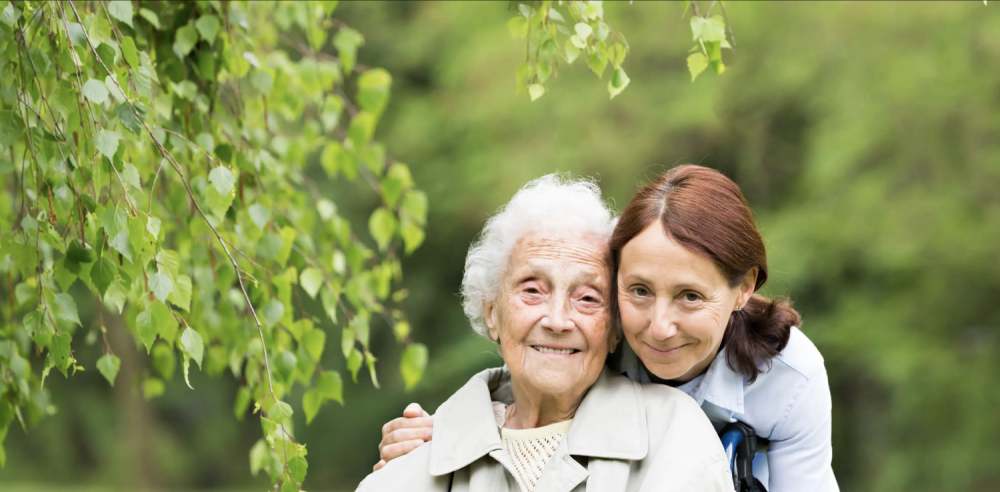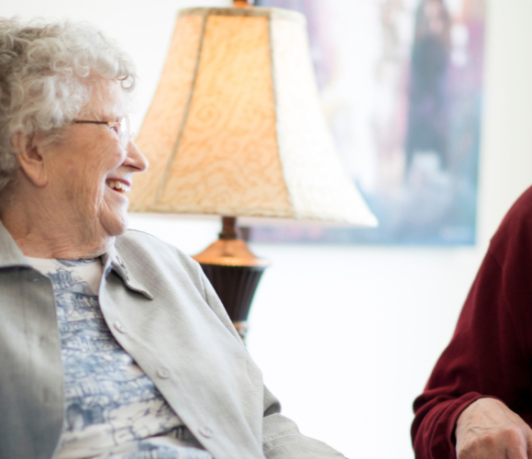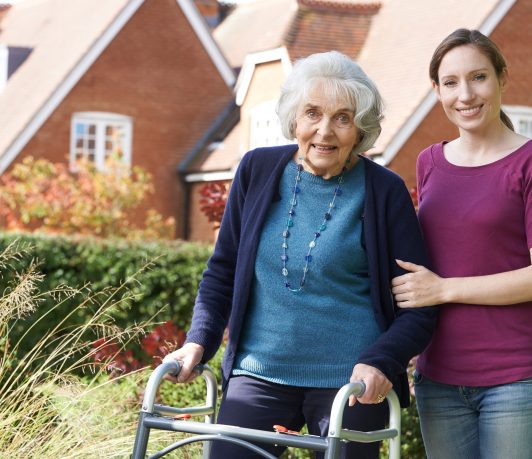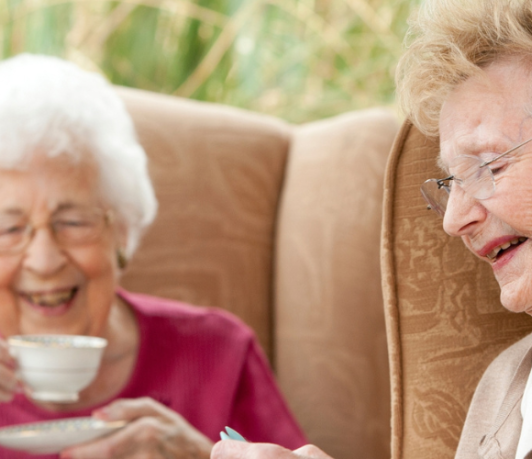How to Reduce Risk of Falls: 20 Useful Tips
Aged Care, Home Care |

Falls can have severe consequences for older adults, leading to hip fractures, broken bones, and other serious injury. As we age, our risk of future falls increases due to various factors, including age-related changes, health conditions, and environmental hazards. However, there are numerous strategies and preventive measures that you or your loved ones can employ today.
In this comprehensive guide, we will explore 20 essential strategies you can draw on moving forward, including several little known ways to reduce the risk of falls.
1. Schedule a comprehensive risk factor assessment
You can initiate falls prevention by consulting with a physical or occupational therapist to undergo a thorough risk factor assessment. This assessment will identify specific areas of concern and guide you towards tailored fall prevention strategies. It may include evaluating your strength, balance, mobility, medications, vision, home or community environment, as well as history of previous falls, to develop a comprehensive plan personalised to meet your specific needs.
2. Prioritise regular physical activity
Engaging in regular physical activity is crucial for maintaining strength, balance, and flexibility. You should aim for at least 150 minutes of moderate aerobic activity per week, along with muscle-strengthening exercises on two or more days. Activities like walking, swimming, tai chi, or group exercise classes can improve muscle tone, coordination, and overall mobility, reducing the risk of falls.
3. Optimise medication management
Work closely with your healthcare provider to review your medications regularly. Certain medications, especially those that cause dizziness, drowsiness, or orthostatic hypotension, can increase your risk of falling. Ensure that medications are properly dosed and closely monitored, and discuss potential side effects with your healthcare provider. They may recommend adjustments, alternatives, or a medication review to minimise future fall-related risks.
4. Participate in fall prevention programs
Joining group exercise programs specifically designed for older adults can provide numerous benefits, including improved strength, balance, and coordination. Look for local community centres, senior-oriented fitness classes, or programs tailored for fall prevention. These programs often incorporate exercises targeting balance, strength training, and flexibility, enhancing your physical abilities, boosting confidence, and reducing the risk of falls.
5. Promote bone health to diminish fall risk
Maintaining strong bones is crucial in preventing fractures. Ensure an adequate intake of calcium and vitamin D through a balanced diet or supplements as recommended by your healthcare provider. Calcium-rich foods include dairy products, leafy greens, and fortified foods, while vitamin D can be obtained from sunlight exposure or supplements. Stronger bones are less prone to fractures, reducing the severity of injuries when falls occur.
6. Create a safe home environment
Conduct a thorough assessment of your home to identify and eliminate potential safety hazards. Install grab bars in bathrooms, secure loose carpets, and ensure that pathways are clear of clutter. Improve lighting throughout your home, particularly in hallways, stairways, and entrances, to enhance visibility and reduce the risk of falls. Consider modifying your home by adding handrails or ramps where necessary to promote accessibility and safety.
Read more on how you can specifically reduce the risk of falls in your home.
7. Seek professional advice
Consult with an occupational therapist or other healthcare professionals specialising in fall prevention. They can provide valuable recommendations tailored to your specific needs, such as suggesting assistive devices or home modifications to improve safety. Occupational therapists can also assess your functional abilities, offer guidance on proper body mechanics, and teach techniques to enhance balance and prevent falls.
8. Address your vision problems
Schedule regular eye exams to detect and address any vision problems promptly. Poor vision can significantly impact your balance and increase the risk of falls. Your optometrist or ophthalmologist can prescribe corrective lenses, treat eye conditions, and recommend appropriate vision aids if needed. By maintaining good vision health, you can improve depth perception, peripheral vision, and overall visual acuity, reducing the risk of falls.
9. Ensure proper foot care
Taking care of your feet is essential for maintaining balance and preventing falls. Wear well-fitting shoes with non-slip soles that provide adequate support and cushioning. If you’re at risk of falls, avoid high heels, open-back shoes, and worn-out footwear. Regularly trim your toenails to prevent ingrown nails and infections. If you have foot pain or discomfort, consult a podiatrist for proper evaluation and treatment. Healthy feet contribute to better stability and reduce the risk of falls.
10. Stay hydrated
Proper hydration is essential for overall health and wellbeing. Dehydration can lead to dizziness, fatigue, and impaired cognitive function, increasing the risk of falls. Drink an adequate amount of water throughout the day, even if you don’t feel thirsty. Be mindful of environmental factors that may contribute to fluid loss, such as hot weather or certain medications. Stay hydrated to maintain optimal physical and cognitive function, reducing the risk of falls.
11. Be mindful of blood pressure and other chronic conditions
Fluctuations in blood pressure can affect balance and lead to dizziness or lightheadedness, increasing the risk of falls. Monitor your blood pressure regularly and follow your healthcare provider’s recommendations for managing hypertension or hypotension. If you experience sudden drops in blood pressure upon standing (orthostatic hypotension), take precautions like rising slowly from sitting or lying down and avoiding sudden movements. By managing blood pressure effectively, as well as other chronic conditions and routine disease control, you can enhance stability and reduce fall-related risks.
12. Keep floors and walkways clear
Cluttered or obstructed pathways can pose significant hazards and increase the risk of falls. Keep floors clear of tripping hazards, such as loose rugs, electrical cords, or objects on the floor. Arrange furniture to allow for easy movement and clear passage. Secure loose carpets or mats with non-slip backing. By maintaining clear and unobstructed walkways, you create a safer environment that minimises the risk of tripping and falling.
13. Use assistive devices
If you have difficulty with balance or mobility, consider using assistive devices to improve safety and stability. Examples include canes, walkers, or grab bars in the bathroom. Consult with an occupational therapist or healthcare professional to determine the most suitable assistive devices for your needs. They can provide guidance on proper usage, fit, and adjustment of these devices to ensure optimal support and reduce the risk of falls.
14. Implement proper lighting
Inadequate lighting can lead to poor visibility and increase the risk of falls, especially in dimly lit areas or at night. Ensure that all areas of your home are well-lit, paying particular attention to hallways, staircases, and entrances. Use bright light bulbs, install additional lighting fixtures if needed, and consider nightlights in bedrooms and bathrooms. Adequate lighting enhances visibility, allows for better depth perception, and reduces the likelihood of tripping or missteps.
15. Assess and modify your home and community environment
In addition to immediate safety hazards, it’s crucial to assess the overall safety of your home and community environment. Look for potential risks such as uneven or slippery surfaces, loose handrails, or inadequate lighting. Consider making modifications, such as installing handrails on both sides of staircases or ramps for easier access. In the community, be aware of uneven sidewalks, poorly lit parking lots, or obstructed walkways. Advocate for improvements in public spaces, reporting any safety concerns to the appropriate authorities, such as local councils. By actively assessing and modifying the home and community environment, you can create a safer surrounding that reduces the risk of falls.
16. Practice Tai Chi or Yoga
Tai Chi and yoga are gentle, low-impact exercises that focus on balance, flexibility, and mindfulness. Regular practice of these activities can improve strength, stability, and body awareness, reducing the risk of falls. Look for local classes or online resources specifically designed for seniors. These activities not only enhance physical abilities but also promote mental wellbeing, relaxation, and stress reduction.
17. Maintain regular health check-ups
Regular health check-ups are essential for monitoring and managing existing health conditions. They also provide an opportunity for healthcare professionals to assess your overall health and identify any other risk factors for falls. During these check-ups, discuss your concerns regarding falls and any changes in your health or medications. Your healthcare provider can offer personalised recommendations, interventions, and referrals to other specialists if necessary.
18. Engage in brain-boosting activities
Keeping your mind active and engaged is crucial for maintaining cognitive function, coordination, and focus. Participate in activities that challenge your brain, such as puzzles, reading, learning new skills, or playing musical instruments. By promoting brain health, you can enhance reaction time, attention, and coordination, reducing the risk of falls due to cognitive impairments or distractions.
19. Install safety features in the bathroom
The bathroom can be a high-risk area for falls due to slippery surfaces and limited support. Install grab bars near the toilet, shower, and bathtub to provide stability and assistance when needed. Use non-slip mats or adhesive strips in the shower or bathtub to prevent slips. Consider using a raised toilet seat or a shower chair to improve accessibility and safety. These simple modifications can significantly reduce the risk of falls in the bathroom.
20. Practice good sleep habits
Adequate sleep is vital for physical and cognitive well-being, including balance and coordination. Maintain a regular sleep schedule, create a comfortable sleep environment, and practice relaxation techniques before bed. Address any sleep disorders or disturbances with the help of a healthcare professional. By prioritising good sleep habits, you can reduce the risk of falls associated with fatigue, daytime sleepiness, or impaired concentration
In summary
Preventing falls among Australian seniors requires a multifaceted approach that addresses various risk factors and promotes healthy habits. By implementing the 20 strategies discussed in this blog post, you can significantly reduce the risk of falls and enhance your overall safety and wellbeing.
Remember to consult with healthcare professionals, such as physical or occupational therapists, to assess your specific risk factors and receive personalised recommendations.
Take advantage of community resources and fall prevention programs designed for older Australians. By staying proactive and making necessary adjustments, you can enjoy a more independent, active, and fall-free life as you age.
At Respect, we understand that maintaining a safe home environment can be challenging, especially for older Australians. We offer professional home care services tailored to your needs. As part of home care services, our dedicated team of care staff can assist you with occupational assessments, home modifications and support to ensure your living space is safe and accessible. They can also help with household chores and home maintenance, reducing the need for strenuous activities that may increase the risk of falls. Our staff can also provide companionship and support, offering peace of mind and a helping hand when needed. By seeking professional assistance and home care services, you can receive the support necessary to create a safe and secure living environment.
Read our handy guide on how to access a home care package and begin to receive the services you need, all in the comfort of your own home.
We’re here to support you
At Respect, we’re passionate about supporting older Australians to ensure the next phase of their lives are filled with purpose and possibilities.
So whether it’s through our network or aged care homes or our home care support options, we are here for you and your family whenever you need us. Your future should shine with meaning, comfort and conveniences — and with our support, you’re backed by over a century of care and consideration for the way you want to live.
We’re here to help! For more information about how to access a Home Care Package and get started with home care support, including the available opportunities and our range of services, download our digital brochure. Got questions or like to receive more support? We’re here to help. Please reach us via our contact page or call us on 1300 144 144.
Interested to learn more about our services?
Simply fill in the below form and one of our expert Advisors will give you a call within 48 hours to discuss your options.




